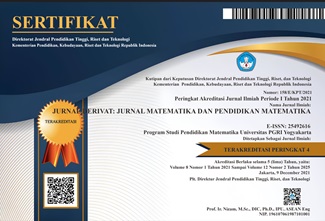Pemodelan Dan Peramalan Indeks Harga Konsumen (IHK) Kota Sampit Dengan Seasonal Arima (Sarima)
DOI:
https://doi.org/10.31316/j.derivat.v6i2.497Abstract
Abstract
Sampit is one of 82 cities in Indonesia which calculate inflation. Inflation is an increase of prices on goods and services in a region. Government’s control is very important because inflation relates to the real income, the exchange rate, import exports, and so on. Inflation is based on the Consumer Price Index (CPI). Because of CPI is a monthly data prices, it is highly influenced by seasonal factors. Therefore, CPI data modelling is needed because it helps the government to make appropriate policies. Method that can be used for time series data with seasonal influences is Seasonal Autoregressive Integrated Moving Average (SARIMA). The results of the study show that the right model for Sampit’s CPI is SARIMA with the order p = 1, d = 1, P = 1, D = 1, Q = 1, s = 12. It is the best model that can built and be used for forecasting because with 95 percent of confidence, the model explains 87.23 percent of data. Forecasting in this research use interval analysis and found that January 2020 may be the highest increase of CPI (inflation) in 2020.
Keywords: CPI, Inflation, SARIMA
Downloads
Published
Issue
Section
Citation Check
License
Authors who publish with this journal agree to the following terms:
-
Authors retain copyright and grant the journal right of first publication with the work simultaneously licensed under a Creative Commons Attribution-ShareAlike 4.0 International License that allows others to share the work with an acknowledgment of the work's authorship and initial publication in this journal.
- Authors are able to enter into separate, additional contractual arrangements for the non-exclusive distribution of the journal's published version of the work (e.g., post it to an institutional repository or publish it in a book), with an acknowledgment of its initial publication in this journal.
- Authors are permitted and encouraged to post their work online (e.g., in institutional repositories or on their website) prior to and during the submission process, as it can lead to productive exchanges, as well as earlier and greater citation of published work (See The Effect of Open Access).







